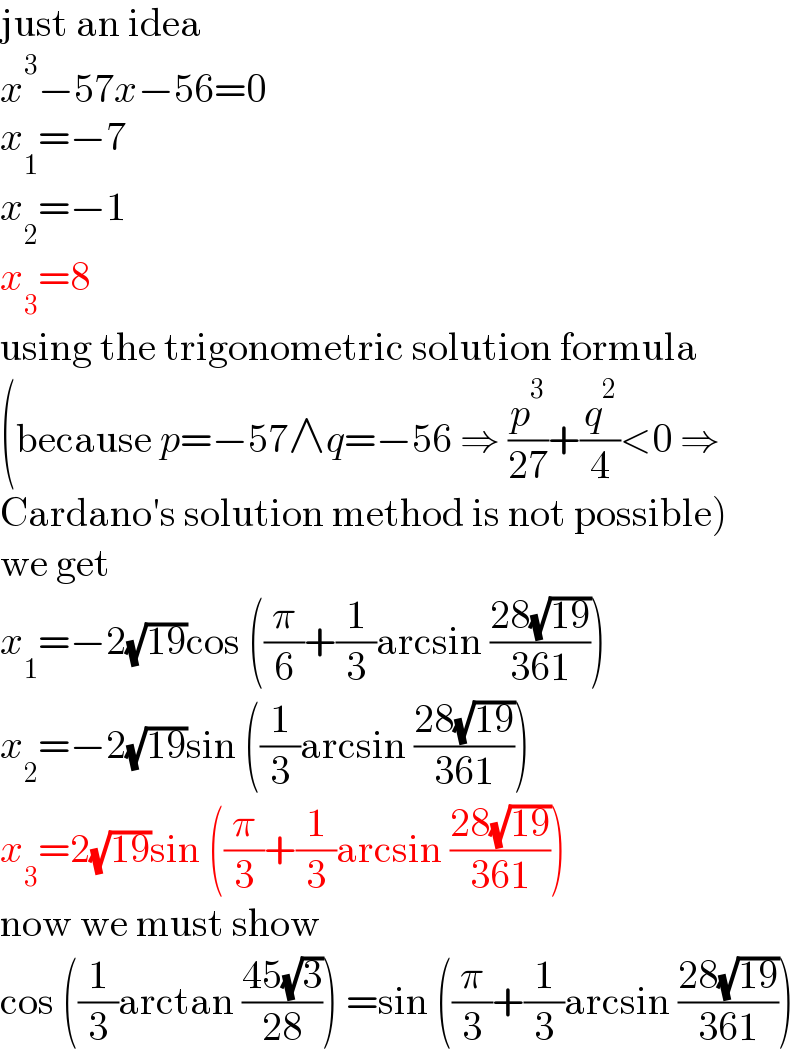
Question and Answers Forum
Question Number 147492 by Kunal12588 last updated on 21/Jul/21
![2(√(19)) cos [(1/3)tan^(−1) (((45(√3))/(28)))] it is equal to 8. How?](Q147492.png)
Commented by MJS_new last updated on 21/Jul/21

Commented by Kunal12588 last updated on 22/Jul/21

Commented by MJS_new last updated on 22/Jul/21

Answered by EDWIN88 last updated on 21/Jul/21

Commented by Kunal12588 last updated on 21/Jul/21

Answered by mr W last updated on 21/Jul/21
![s=2(√(19)) cos [(1/3)tan^(−1) (((45(√3))/(28)))] =2(√(19)) cos [(1/3)cos^(−1) (((28)/( 19(√(19)))))] =2(√((−((−57)/3)))) cos [(1/3)cos^(−1) (−((−56)/(2(√((−((−57)/3))^3 )))))]>0 which is root of x^2 −57x−56=0 (x+1)(x+7)(x−8)=0 8 is the only positive root, therefore 2(√(19)) cos [(1/3)tan^(−1) (((45(√3))/(28)))]=8](Q147564.png)
Commented by Kunal12588 last updated on 22/Jul/21

